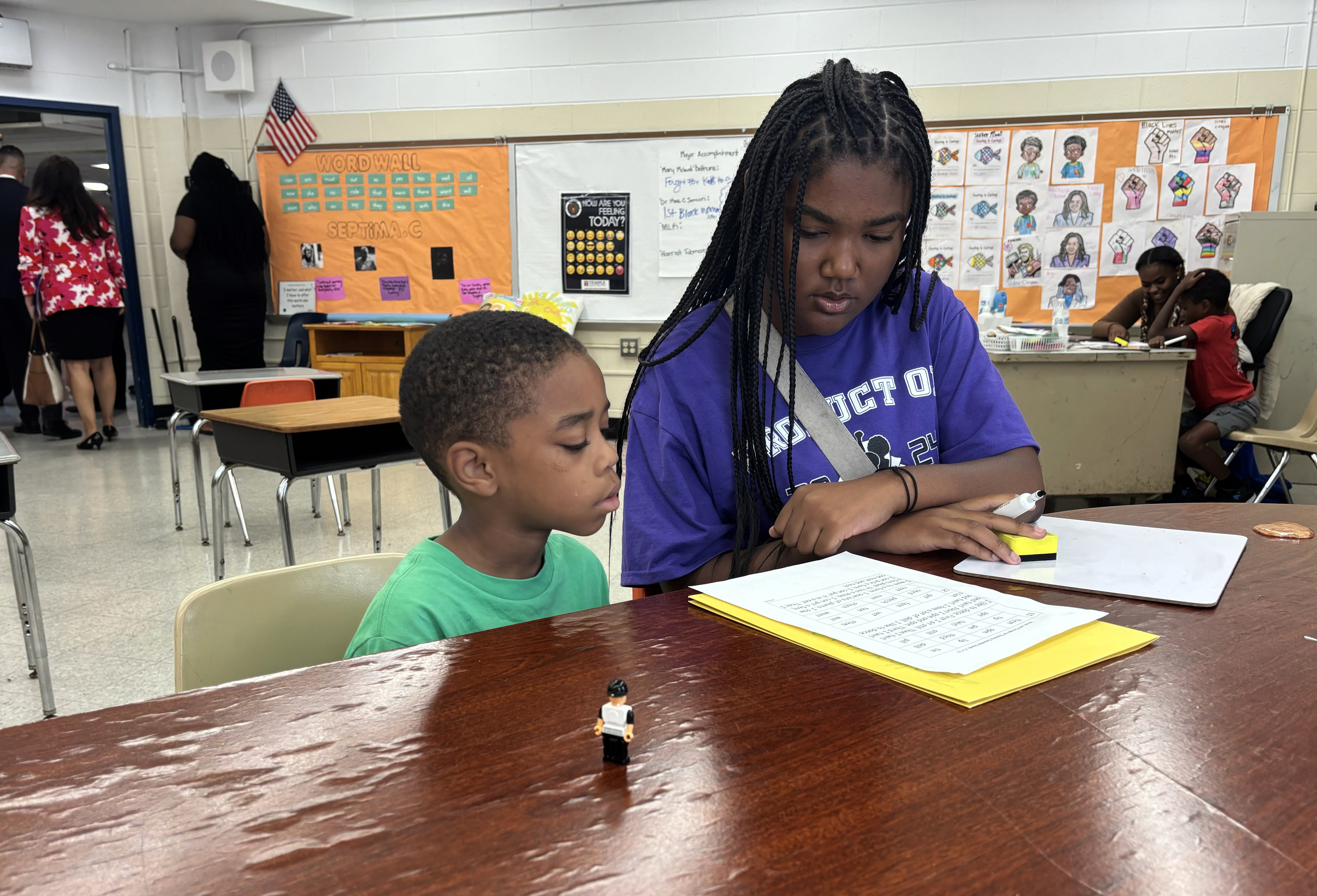Report on Curriculum Enhancements at St. Ambrose Catholic School in Alignment with Sustainable Development Goals
St. Ambrose Catholic School has initiated significant updates to its middle school curriculum, strategically designed to enhance academic rigor and equip students with essential life skills. These changes directly support the achievement of several United Nations Sustainable Development Goals (SDGs), particularly SDG 4 (Quality Education), SDG 8 (Decent Work and Economic Growth), and SDG 17 (Partnerships for the Goals).
Advancements in Mathematics Education: Fostering Quality Education (SDG 4)
Strategic Curriculum Improvement and Performance
Following a multi-year strategic focus on mathematics, St. Ambrose School has achieved notable success, contributing to SDG 4 by ensuring inclusive and equitable quality education. Key outcomes include:
- Successful implementation of the Sadlier Math curriculum, leading to measurable improvements in student performance.
- Surpassing the average standardized test scores of most schools within the Diocese of Springfield for the 2024-2025 school year.
- Establishment as one of the highest-performing schools in the Diocese based on standardized metrics.
Introduction of Accelerated Mathematics Program
To further its commitment to SDG 4 and provide tailored learning opportunities, St. Ambrose will introduce an accelerated math program for middle school students (grades 6-8) in the 2025-2026 academic year. The program is structured to challenge all students appropriately.
- Traditional Math Class: This course will cover the standard yearly benchmarks required for each grade level.
- Accelerated Math Class: This course will cover all traditional concepts in addition to higher-level concepts, delivered at a more rapid pace to challenge advanced learners.
Expansion of Practical and Global Curriculum Components
Foreign Language Instruction: Promoting Global Citizenship (SDG 4, Target 4.7)
Introduced in the 2024-2025 school year, foreign language instruction for 8th-grade students promotes education for global citizenship and an appreciation of cultural diversity, a key component of SDG Target 4.7. This initiative also exemplifies SDG 17 (Partnerships for the Goals) through community collaboration.
- Languages Offered: Students may select either Spanish or French.
- Instructional Staff:
- Spanish instruction is provided by Mr. Justin Johnson, the middle school Social Studies teacher.
- French instruction is provided by Dr. Janis Robinson, a local physician, St. Ambrose Parishioner, and former French instructor.
Personal Finance Education: Supporting Economic Well-being (SDG 1, SDG 4, SDG 8)
To address critical life skills, a personal finance course was integrated into the 8th-grade curriculum. This program directly supports multiple SDGs by equipping students with the knowledge for future financial stability and economic participation.
- SDG 4 (Quality Education): Provides relevant skills for lifelong success.
- SDG 8 (Decent Work and Economic Growth): Fosters financial literacy essential for navigating the modern economy.
- SDG 1 (No Poverty): Imparts foundational knowledge to help prevent future poverty through responsible financial management.
The curriculum utilizes the Junior Achievement program, a partnership (SDG 17) that includes a practical field trip to the Junior Achievement Biztown center. This immersive experience allows students to simulate significant real-world financial activities, including:
- Purchasing a home and a car
- Applying to college
- Managing personal finances in a simulated economy
Both the foreign language and personal finance programs are scheduled to continue in the 2025-2026 academic year, reinforcing the school’s commitment to a holistic and forward-looking educational framework aligned with global development objectives.
Analysis of SDGs, Targets, and Indicators
1. Which SDGs are addressed or connected to the issues highlighted in the article?
- SDG 4: Quality Education: This is the central theme of the article. The entire text focuses on St. Ambrose School’s efforts to enhance its curriculum by adding accelerated math, foreign language, and personal finance courses. The stated mission is to “provide a challenging curriculum that prepares students to be successful in high school and beyond,” which directly aligns with the goal of providing quality education.
- SDG 17: Partnerships for the Goals: The article highlights collaborations to achieve its educational objectives. The school partnered with the “Junior Achievement program” for its personal finance curriculum and with a local community member, “Dr. Janis Robinson,” to teach French. These actions exemplify building partnerships to achieve sustainable development goals.
2. What specific targets under those SDGs can be identified based on the article’s content?
- Target 4.1: By 2030, ensure that all girls and boys complete free, equitable and quality primary and secondary education leading to relevant and effective learning outcomes. The article supports this by describing the school’s efforts to improve “math standardized test scores” and provide a “challenging curriculum” for middle school students (grades 6-8) to ensure they are prepared for high school.
- Target 4.4: By 2030, substantially increase the number of youth and adults who have relevant skills, including technical and vocational skills, for employment, decent jobs and entrepreneurship. The introduction of “personal finance instruction” and the field trip to the “Junior Achievement Biztown center” where students “simulate real life significant experiences like purchasing a car, a home, applying to college” directly aim to equip students with relevant financial and life skills for their future.
- Target 4.7: By 2030, ensure that all learners acquire the knowledge and skills needed to promote sustainable development, including, among others, through education for sustainable development and sustainable lifestyles… and global citizenship. The “personal finance instruction” provides knowledge for sustainable lifestyles, while the addition of “foreign language” instruction (Spanish and French) promotes skills for global citizenship.
- Target 17.17: Encourage and promote effective public, public-private and civil society partnerships, building on the experience and resourcing strategies of partnerships. The article explicitly mentions the school utilizing the “Junior Achievement program” and involving a “Longtime local physician and St. Ambrose Parishioner, Dr. Janis Robinson,” as an instructor, which are clear examples of civil society and community partnerships to enhance education.
3. Are there any indicators mentioned or implied in the article that can be used to measure progress towards the identified targets?
- Standardized Test Scores: The article explicitly mentions that “St. Ambrose classes surpassed the standardized test average of most schools in the Diocese” in math. This serves as a direct, quantitative indicator of improved learning outcomes (relevant to Target 4.1).
- Curriculum Additions: The implementation of new courses is a clear indicator of progress. The article specifies the addition of “accelerated math classes for middle school,” “foreign language” (Spanish and French), and “personal finance instruction” for 8th-grade students (relevant to Targets 4.4 and 4.7).
- Experiential Learning Activities: The field trip where students “attend a field trip at the Junior Achievement Biztown center” is a specific indicator of providing practical, skills-based education (relevant to Target 4.4).
- Existence of Partnerships: The named collaborations with the “Junior Achievement program” and “Dr. Janis Robinson” serve as direct indicators of the school engaging in multi-stakeholder partnerships to achieve its goals (relevant to Target 17.17).
4. Table of SDGs, Targets, and Indicators
| SDGs | Targets | Indicators |
|---|---|---|
| SDG 4: Quality Education | Target 4.1: Ensure all children complete equitable and quality primary and secondary education. |
|
| SDG 4: Quality Education | Target 4.4: Increase the number of youth with relevant skills for employment and entrepreneurship. |
|
| SDG 4: Quality Education | Target 4.7: Ensure all learners acquire knowledge for sustainable development, including financial literacy and global citizenship. |
|
| SDG 17: Partnerships for the Goals | Target 17.17: Encourage and promote effective public-private and civil society partnerships. |
|
Source: advantagenews.com







